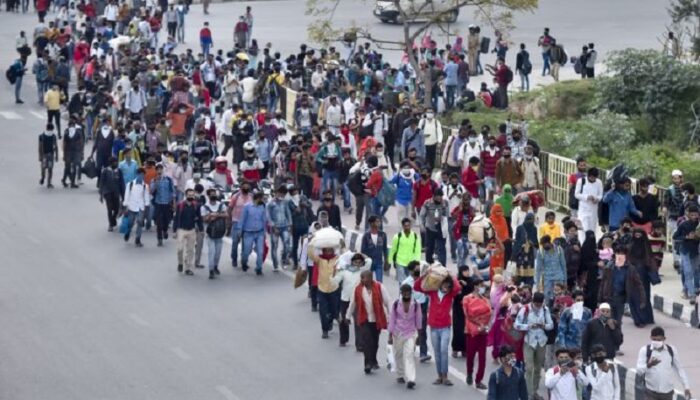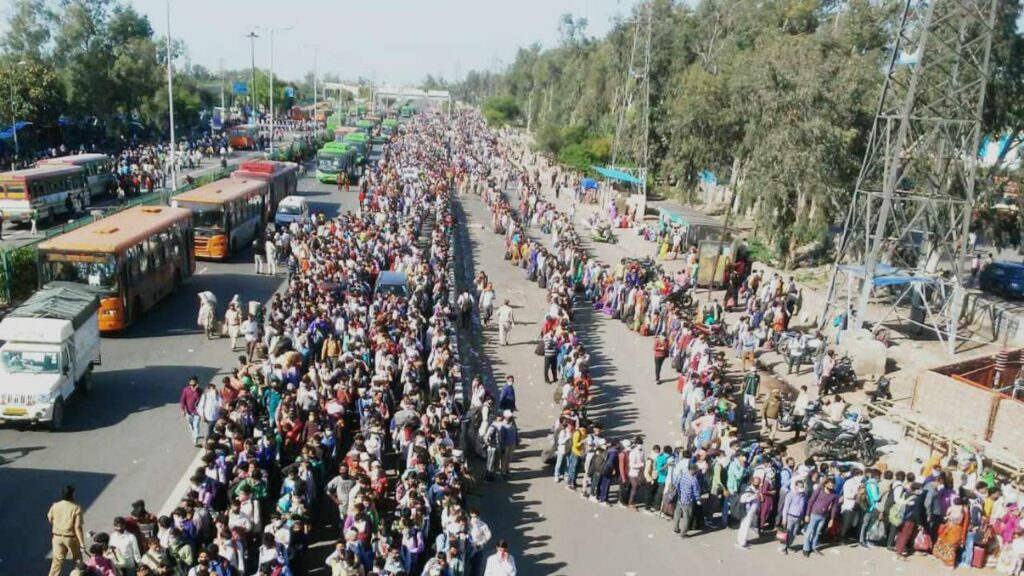
File Picture
THE second decade of the 21st century has seen an unprecedented event; you may call it a scare, you may call it a pandemic or you may even call it a war or a biological war, to be precise. The entire world is fighting a unseen enemy, coming from the Wuhan province of China, posing danger to human lives all across the globe. Every single person on earth today lives in fear, feels threatened, finds himself helpless to the wrath of nature and runs away from even his near and dear ones to run for his life. The enemy, which crosses the boundaries and lines of control of all nations without fear, passport or visa, seems invincible.
The enemy, which poses danger to the entire human race, has challenged all progress, developments and technological advancements that the modern world has made. The enemy number one to mankind today is known by the name of Corona Virus or Covid 19.
Corona has brought the entire world to a standstill– all offices shut, factories closed and shops forced to bring down shutters. Almost every country is in a state of health emergency with complete lockdown and full restriction on human movement. You stay where you are, but, stay away from all others, no matter if they are your friends, family or relatives. The idiom ‘Proximity breeds contempt’ can be revised as ‘Proximity breeds disease’ in today’s global scenario.
In India, too, a 21-day complete lockdown was declared on March 24, 2020 by Prime Minister Narendra Modi in his televised address to the nation . Nobody was allowed to go anywhere as rail, road and air traffic was completely shut. The fast paced life in the cities of Delhi/NCR, Mumbai, Pune and Bengaluru suddenly came to a halt forcing people to stay indoors and work from home, wherever possible. The people were asked to stay indoors and get groceries delivered at doorstep.
But the facts of life are different– not everyone can work from home. Thousands of labourers and other workers were suddenly left with no work, no income but expenses intact. Millions lost work overnight. There was panic and a large number of them tolled their beds, packed their bags, took their families and set out for their hometowns. The distance to be covered ranged between 100 kilometres to a thousand kilometres without any means of transport or food for the children. Still they were willing to traverse and prepared to face any amount of hardship that would come their way.
Within a day of lockdown India was witnessing a massive exodus from metropolitan cities to the hometowns. The migrants were seen in the states of Maharashtra, Rajasthan, Delhi/NCR. The entire purpose of lockdown, to implement social distancing, stood defeated. Migrants were on road, carrying their belongings on their heads, beating social distancing, hunger and starvation, facing hardships together. They started walking all their way to their hometowns, mostly in Uttar Pradesh, Bihar or Rajasthan.

File Picture
India had never seen such a mass migration of human population in the 21st century. Delhi’s bus terminus at Anand Vihar became assembly point for lakhs of such migrants where the state governments arranged several buses to ferry these workers so that they do not have to walk. Arrangements, however, did not seem sufficient and thousands of these workers stood in despair waiting to get a vehicle for their home.
Complete chaos at the bus terminus, assembly of people in large numbers and walking on foot together only increased the chances of corona virus infection. People risked their lives as they saw no hope. Many felt even if corona virus does not kill them they will die of hunger and starvation.
Corona made the modern day life difficult be it the people following social distancing to break the chain of virus from spreading or others who fought for their existence every day. Modern India was facing mass exodus in the most primitive manner. It was like history repeating itself when the world had witnessed similar mass migrations on several occasions at different times.
IN INDIA…
It is not for the first time that India has seen mass migration. The first was at the time of Independence when India was divided into West Pakistan which is commonly referred as Pakistan and East Pakistan which is now known as Bangladesh. The mass migration was witnessed when people shifted from India to Pakistan and vice versa.
1) India’s Partition: Following the partition of British India into Pakistan and India, some 15 million people found themselves stranded in the ‘wrong’ part of the land, Hindus in Pakistani territory and Muslims in Indian territory. Thus began the greatest international migration in history with Muslims migrating towards eastern and western wings of the newly formed state of Pakistan and Hindus crossing over to India.
Emotions ran high and terrible atrocities were committed on both sides ranging from damage to property, arson, killing and mob violence. Ordinary peace loving Hindus and Muslims became so enraged with each other that they committed such atrocities they would never have considered themselves capable off.
UNHCR estimates 20 million Hindus, Sikhs and Muslims were displaced during the partition of India, the largest mass migration in human history.
2) Exodus of Kashmiri Pandits: The Hindus (also known as Pandits) of the Kashmir Valley, were forced to flee the Kashmir valley as a result of being targeted by JKLF and Islamist insurgents like Hizb-ul Mujahideen during late 1989 and early 1990. Of the approximately 300,000 to 600,000 Hindus living in the Kashmir Valley in 1990 only 2,000–3,000 remained there in 2016.
Inflammatory speeches were made from loudspeakers of mosques and posters were stuck on the houses and shops of Kashmiri Pandits ordering them to either embrace Islam or leave the valley. They were threatened with their lives.
January 19, 1990, is widely remembered by Kashmiri Hindus as the tragic “Exodus Day” of being forced out of Kashmir. Most families were resettled in Jammu, Delhi/ NCR and other neighbouring states.
What happened on January 19, 1990: A curfew was imposed by the then governor, Jagmohan after he had dismissed the state government. Militant groups JKLF and Hizb-ul Mujahideen were exhorting people to defy the curfew.
Inflammatory slogans were relayed from mosques all day long. One of them said: ‘Kashmi mei agar rehna hai, Allah-O-Akbar Kehna hai’.
Kashmiri Pandits are known for their significant contributions to a variety of spheres, including Shaivism, philosophy, theology, literature and poetry, music, and the arts and sciences.
[the_ad id=”22718″]


















